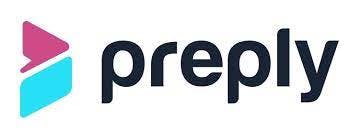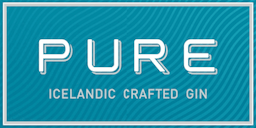WEBSITE
OPTIMISATION
Search Engine Optimisation
Improving the content and structure of your website so that it ranks higher on search engines
Conversion Rate Optimisation
Improving the number of visitors to your website who convert into customers
Analytics & Measurement
Using data to measure the impact of changes, see how users are interacting with your pages and monitor growth
User Experience & Performance
Having a fast responsive website with clearly presented information and intuitive navigation
Website
Optimisation
What is Website Optimisation
Although there is no set definition of Website Optimisation due to the many different contexts in which it can be applied. However, generally speaking,
optimising your website is about making the best or most effective use of it.
This will depend on your specific use and priorities but there are some absolutes we can follow:
Increasing Traffic:
Having more traffic or visitors to your website is a very important metric, this can be increased through implementing search engine optimisation strategies and generally takes up to 6 months before you might start to see improvements.
Faster and Better Usability:
Improving your website so that it’s faster for your users and easier or more logical to use is an instant improvement for your current users.
Increasing Conversion Rate:
You can also further improve your website from the perspective of converting visitors into customers which is called conversion rate optimisation.
Traditionally SEO Only covers visitors that find your website through search engines. This is limiting because in practice, especially with smaller businesses. Most traffic may be coming from digital advertising such as paid search, digital media or affiliate channels. Therefore it is important that all your websites pages are optimised and you consider traffic coming from all sources. Conversion rate optimisation on the other hand can often be slightly one dimensional as well. When optimising pages certain factors such as prominent calls to action and focussing on offers can reduce the quality of information provided to the user. This is not to say it’s not an effective practice but just a balance needs to be found so that content is still helpful and accessible to your users. The part that often is overlooked by both SEO and CRO is user experience. This concerns itself with how users interact with your website, industry leading researchers The Neilson Norman Group defines user experience as “[encompassing] all aspects of the end-user's interaction with the company, its services, and its products.” Whilst this is quite a broad definition we can reduce it to mean how helpful your website is, how easy it is to use and how effective it is in the reason for their interaction. I think most people have experienced searching for a recipe only to be presented with a thousand word essay on the author’s childhood and the first time they tasted something. Furthermore you may be bombarded with notification requests, complex cookie messages, measurements that differ to your countries ones. All these factors encompass a poor user experience as it’s difficult to interact with the website and hard to achieve your goals there. Hopefully it is clear now that focussing on each of these aspects in isolation isn’t ideal and to truely optimise a website whollistically we need to consider each discipline. This is how I approach website optimisation, it is a conscious balance between each of these practices that leads to a better overall outcome.
Another important optimisation for businesses with a local presence is improving your Google business profile. This listing is what shows up first for most websites and is vital to have correct information and utilise every opportunity to show up in relevant searches. Local listings exist beyond Google and are often under utilised. There are many popular directories such as Yelp, Bing, Yahoo, Apple Maps, Facebook, Foursquare, and more. Of course you might not get much traffic from these at all but each one is a signal to both Google and your potential clients that you are a well established business.
Tehcnical Website Optimisation: Another important category of optimisations you can make for your website is from a technical perspective. This can be measured objectively through tools such as Lighthouse which is an open source framework for quantifying your websites performance. This tool is the standard because it measures all significant metrics and provides an overview of factors that affect website performance. Often companies face the issue where their website looks good but performs badly, it's an issue that is often hidden due to testing only being performed on a high specification device connected to a fast network. This is to say loading a page on your new laptop with a connection speed of over 100mbps is not a good representation of how your average user might be experiencing your website on a 4G connection on their mobile phones... There is a constant game of cat and mouse between ever evolving complexity in design and capabilities of website builders and the performance of the devices we use to browse the internet. It is hard to explain this without getting overly technical but if you imagine processing resources increase as the complexity of a page increases. There are many methods of improving the performance of a website such as caching, lazy loading, image optimisation, code splitting or minification... The problem that occurs is different platforms allow for different level of control over these factors. Many out the box website builders consider some of these aspects but don't allow you to have control over their implementation. As a result sometimes it is necessary to find a balance between what you need to optimise and what you need to have design wise. Yes the 3D render of your product is visually stunning and will increase conversions but it also adds 10mb to your page size and increases load time by 5 seconds which might lead you to lose 30% of your visitors. These are just reasonable estimations but the concept remains. You need to find a balance between design and performance as well as evaluating the most significant bottlenecks for each page of your website. You don't need to consider every single page either, there may be some pages you don't mind being slow and there are others where performance is crucial.
Trusted By:

Hi I'm Matt and I'm a website expert
For the last 10 years I've been building and improving websites for companies from FTSE 250 companies to small businesses. I am an SEO specialist, developer, AI and digital marketing enthusiast.





